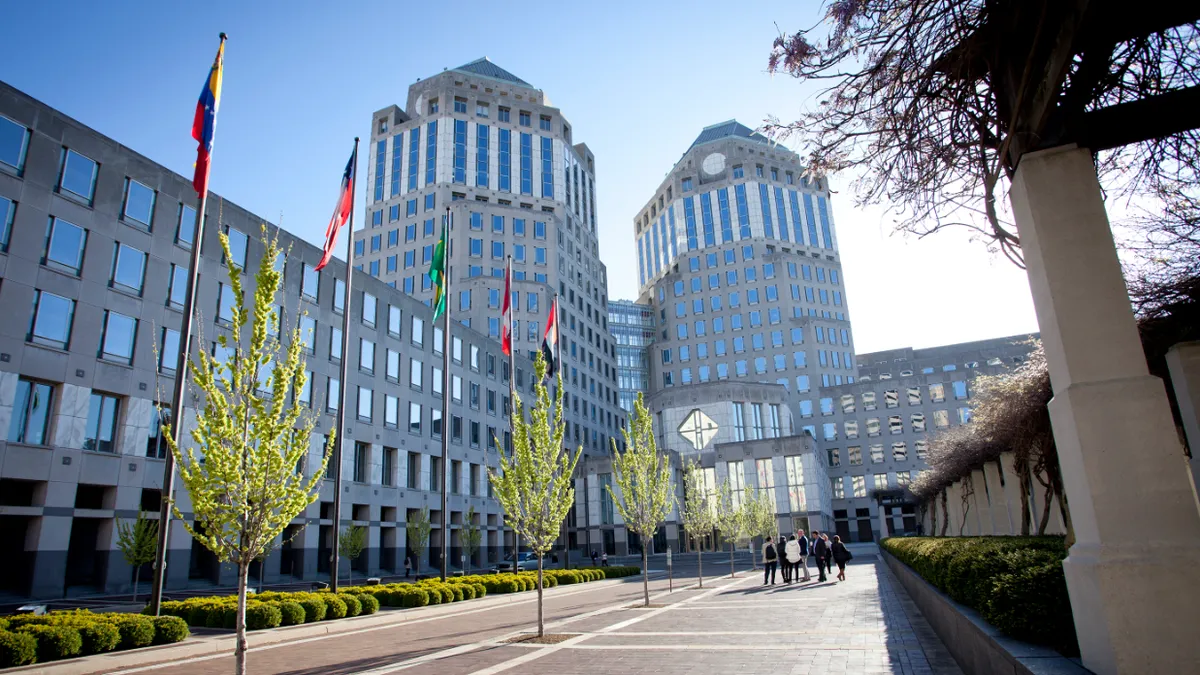Dive Brief:
- Proctor & Gamble — which owns Tide, Gillette and a host of other consumer goods brands — is bracing for a $2.2 billion hit to earnings this year from inflation in its commodity and material costs.
- In its most recent period, commodity and input costs weighed on gross margins, which increased by 1.5 percentage points overall thanks to price hikes and productivity savings despite the cost inflation.
- “We continue to expect more volatility in the macro and consumer environment, and expect sustained pressure in costs and foreign exchange as we move forward,” CFO Andre Schulten told analysts Friday, while also noting that costs have stabalized in recent months.
Dive Insight:
As P&G faces more pressure from costs as well as private label brands, which have undergone a renaissance of sorts during an era of protracted inflation, the company is looking to its supply chain and operations as a competitive advantage.
Earlier this year, Schulten pointed to the CPG company’s “Supply Chain 3.0” initiative as well as environmental sustainability as part of a suite of strategies guiding the company. With that effort, the finance chief said P&G is looking to save $1.5 billion through automation and digital investments.
Those include digital capabilities to increase the speed of product reformulation to “drive superiority at lower cost,” Schulten has said previously. More broadly, P&G has also been “constantly looking at our end-to-end supply chain, including logistics, to drive costs out,” according to the finance chief.
While productivity boosts have helped the company’s bottom line, price hikes have helped significantly more. Productivity savings amounted to a gross margin benefit of just over 2 percentage points, while price increases were a 4.7 percentage point benefit, according to the company’s earnings release for the period ending March 31.
But retailers may be warying of price increases from the brands on their shelves. Spats over pricing with retailers have occasionally spilled out into public view in recent months. Retailers generally may be looking to hold the line on more increases as they look at changing commodity and other input prices for their suppliers, including big brands.
Schulten essentially acknowledged this earlier in the year at a conference in February. “As you might expect, as the inflationary cycle wears on, each new pricing decision becomes more difficult,” the executive said then.
To make price hikes more palatable, P&G’s strategy is to somehow improve its offering. At the February conference, Schulten said that “if it comes down to a choice of taking pricing or cutting investment in innovation and support for our brands, we continue to believe that we can deliver superior value for consumers and retailers via sustained investment.”
As prices and sales have risen, the volume of the company’s shipments have fallen. That metric fell by 3% in the most recent quarter, which actually slowed from the 6% decline in the period ending Dec. 31.
Also of note, after more than a year of turbulence in global supply chains, P&G is “stable in terms of supply and on-shelf availability, which is also helping our overall position in the market,” Schulten said last week.














